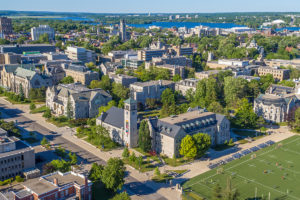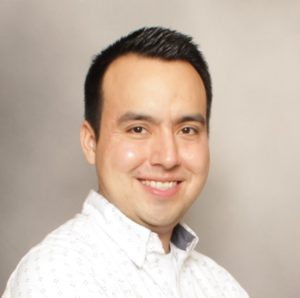Respecting Indigenous culture in Queen’s University communications

The unfolding of National Indigenous History Month this month in Canada underscores the responsibility among higher education communicators to ensure the content they produce about Indigenous affairs at their institutions is accurate, respectful and culturally sensitive.
That’s part of the job for Aaron St. Pierre and Mika Henry of the Office of Indigenous Initiatives at Queen’s University. As, respectively, the office’s associate director, and project & communications coordinator, St. Pierre and Henry’s work includes guiding central communications and other Queen’s units on creating their Indigenous-related print, video and other types of content for various platforms and audiences. They aim to help content creators communicate about the finer details of Indigenous culture, heritage and traditions in ways that are current, St. Pierre says.

“There are a lot of complexities and nuances when you’re communicating about Indigenous issues that people might not pick up on, even well-trained, experienced communications professionals,” says St. Pierre, who is Potawatomi and Ojibwe. “They might miss some points…and they usually revolve around language and terms, because in the past 10 or 20 years, there’s been a real evolution in the words we use when we’re describing Indigenous people or issues.”
Most communicators today understand that “Indigenous” is the preferred way to describe members of this community in general, but St. Pierre says a common mistake he sees is using the term in place of a person’s distinct heritage.
“People have a tendency to use “Indigenous” as a catch-all term…it’s always preferable to refer to the person’s community, whether it be First Nations, Inuit, Metis or specific communities within those groups,” he says. “It’s safest to check with Indigenous communities themselves to find out what terms would be appropriate.”
“Everybody likes to be addressed differently, and everybody has their own sense of their own identity. So it’s really about personal preference,” says Henry, who hails from Tyendinaga Mohawk Territory.
The OII will also provide guidance on correctly pronouncing the names of communities, tribes and other aspects of Indigeneity. “It’s a matter of recognizing when someone is trying with the language and correcting them when necessary,” Henry says, noting that some terms can be difficult to say even for those who are Indigenous.
Henry says the quality of Indigenous-related communications in higher education is bolstered by the mere existence of the OII—which was established a Queen’s in 2017.
“The establishment of the OII has opened the door for more communication about Indigenous matters, and for more opportunities for awareness and education. So it has definitely had a positive impact,” Henry says.
Both St. Pierre and Henry are also heartened to see how post-secondary schools across Canada are creating more space to understand, discuss and be supportive of Indigenous issues. Such momentum, they say, helps with advancing thoughtful, inclusive communications on Indigenous affairs that enhances public knowledge.
“It’s been great seeing this growth…Having staff and resources and supports in place to help make sure that those communications are done respectfully is actually supporting that goal in a meaningful way,” St. Pierre says. “I think there’s still a long way to go, but we are going in the right direction.”